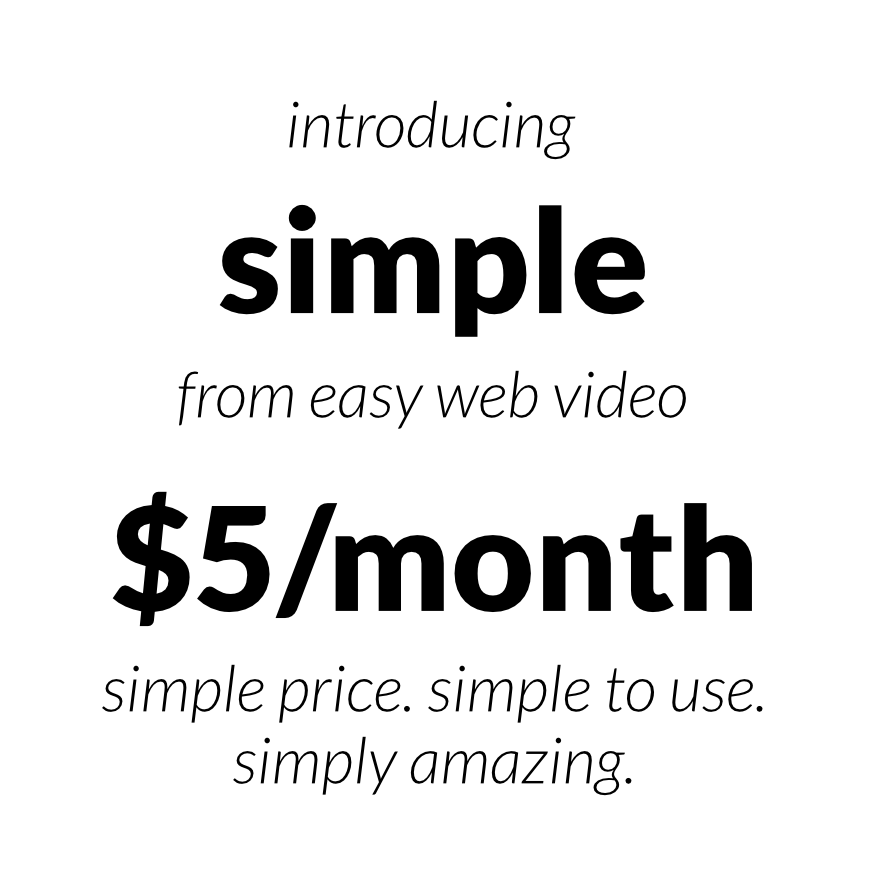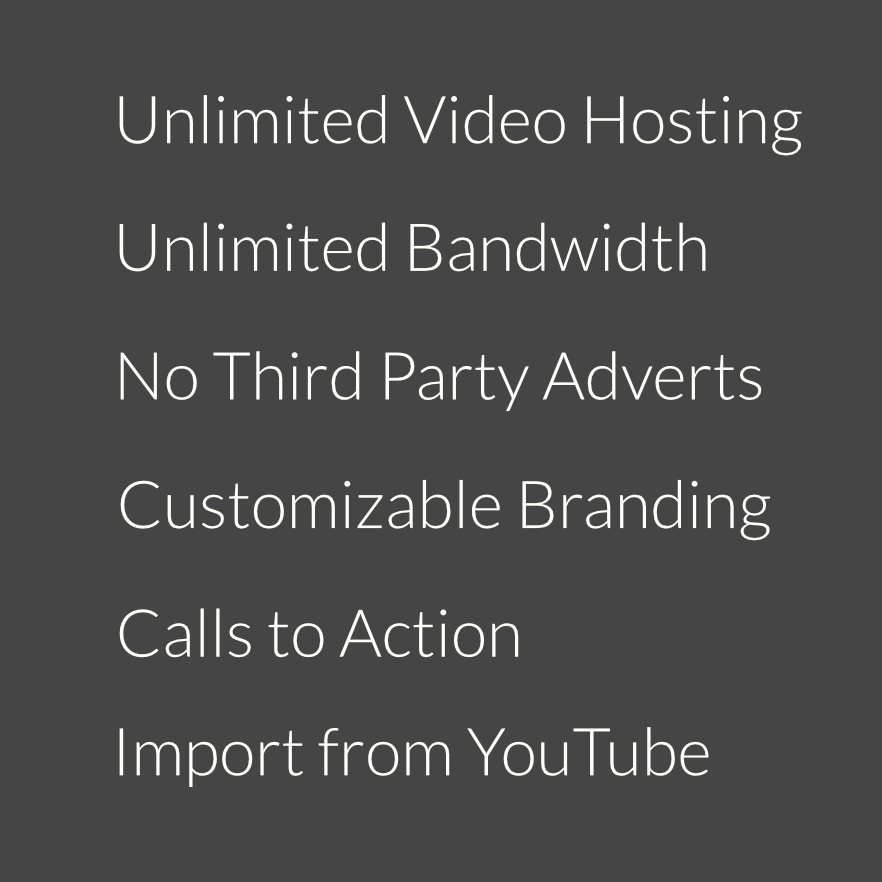
In 2021, we expect Video Marketing to continue to grow by leaps and bounds. As more companies realize just how accessible this marketing channel is; the sky is truly the limit for every business owner and marketer. Will a new marketing technology emerge? A new platform? Probably both. In any case, the future of Video Marketing offers a lot to be excited about and one thing is certain — the world is moving towards video content, not away from it.
With that in mind, let’s draw upon some of the past year’s successes and look ahead to what we might expect in 2021.
More Social Media Channels Will Jump on Board
Video Marketing is a mainstay of Facebook already. But with the changing algorithm and rising prices, sister company Instagram may become the top marketing contender. Instagram has recently jumped on board with pilot programs that aim to bring Video Marketing to the platform in new and creative ways. The inclusion of Video Marketing in Instagram Stories is one of the bigger innovations in the Video Marketing space.
But don’t put all your money on the app only channel yet, LinkedIn has also joined the fray with sponsored video content now available. For B2B marketing, LinkedIn has the potential of hitting your future clients while they’re already in the business mindset, offering a unique entry point for creative ads. Since running LinkedIn video ads can be more expensive than other social platforms, it is even more essential to publish engaging and dynamic video content that is fully optimized for this captive audience.
What’s more, we can expect new innovations down the road. In other words, whatever Facebook, Instagram, Twitter, LinkedIn, and others have planned for video next: it’s only going to be a greater part of our online advertising and brand building experiences.
Video Content > Television? It Could Happen
When Netflix began as a mail-order video service, no one could have anticipated what would come next. Now, several years later, Netflix is a powerhouse of video content; and not just other people’s content either. Netflix is now a full-fledged production studio in addition to a streaming service. Add to that Hulu, Amazon Prime, and a host of other services and it’s not difficult to imagine a not too distant future where internet video content surpasses traditional television content.
As this trend continues, the video marketing opportunities will only increase from here. YouTube already features a robust video ad system. With the growing popularity of several YouTube channels, vloggers, influencers, and more; there are a lot of opportunities for brands to advertise. Advertising on YouTube and other streaming services offers several benefits. For instance, it’s less expensive, easier to produce, and offers more targeting features, not to mention they just added vertical video to their repertoire. Watch out television. You’re old news.

More Barriers Will Be Broken
As is often the case with technology, the barriers to entry will continue to be reduced. Consider social media as a whole. Social media was once for your high-school friends to reconnect and is now a vital tool for any business, requiring major efforts and manpower. It puts you directly in front of your customers, allows you to build a community through daily engagement, offers a channel for customer support, a soapbox, and more.
It would be difficult to overstate how effective of a tool social media is for businesses. 20 years ago if we had told you that we had a marketing tool that could accomplish all of these things, most businesses would have signed a blank check for it. Of course, this tool exists today. And it’s free-ish.
The barrier to entry for businesses of all sizes to compete with larger competitors and connect with customers is virtually non-existent, thanks to social media. In much the same way, Video Marketing has always been a difficult nut to crack. Thanks to the internet, it isn’t anymore. More businesses are churning out video content than ever before. This is largely due to the accessibility of the medium. No longer do businesses have to hire a professional videographer or sound technician. Expensive editing services? Not necessary. Today, professional quality videos are more attainable than ever.
Let’s face it, the buyer’s journey has changed dramatically due to the internet. For offline as well as online purchases, the process of discovery to purchase to repeat customer now passes through the internet.
According to HubSpot:
- 95% of people have watched an explainer video to learn more about a product or service.
- 81% of people have been convinced to buy a product or service by watching a brand’s video.
- 69% of people have been convinced to buy a piece of software or application by watching a video.
- 85% of people say they’d like to see more video from brands.
All signs point to video being increasingly used to further customers along their buyer journey. From teaser videos to explainers; promotional videos to traditional advertisements. There’s an opportunity to hit each one of your crucial touch-points with video content.
Don’t get me wrong, traditional marketing strategies still have their place. Truthfully, the buyer’s journey is not fundamentally different. However, the route they take is. Customers are actively searching out information online before making a purchasing decision. They’re interacting with brands, asking for recommendations and more on social media, just as they would ask a friend, colleague or neighbor.
The ability to research a product or service thoroughly online is not only convenient, it’s extraordinarily helpful. There’s no reason to think this trend won’t continue and become even more individualized. As such, video marketing now holds a vital position in any online marketers’ sales funnel.
Diversified Videos Content
The bulk of video content being produced by brands resembles your typical “advertisement.” While this will always be a mainstay of video marketing content; signs point to changes on the horizon…and we welcome them.
Live video is increasing in popularity as are event-specific videos which promote a particular sale, offer, or promotion. Think about the Snapchat geo-filter, offline event hashtag trends, boosting posts based on location and so on. As producing video content becomes easier, there’s less of an emphasis on broad, all-encompassing advertisements and more on content-rich, real-time, attention-grabbing engagement.
While traditional ads will always have a place in your online marketing quiver, they aren’t the only arrow to shoot. Brands are producing content, which showcases a specific product, rather than an entire line. For example, restaurants are frequently producing content which focuses on a specific dish, special, or promotion rather than a broad “come to our restaurant” advertisement and seeing great success from this level of specificity. This is possible, partly because all viewers expect to be inundated with more video content more frequently, so you can take greater risks with each content item, as well as do a deep dive into individual products or features.
For a small business to produce a television commercial, the expense is tremendous. What’s more, the focus tends to be on these broad stroke videos which advertise the business as a whole rather than focus on particular aspects. With online video marketing content, this barrier is eliminated. Brands of all sizes will continue to produce diverse content and explore all the possibilities the medium has to offer.
Mobile Video Content
More content is being viewed on tablet and mobile devices than ever before. This makes sense. We’re all “on the go” at any given time. The tablet and smartphone are quickly taking the place of the desktop and laptop computer. In a few years, they too may become old news. Due to this, an often mentioned term in the digital space is “mobile first.” This strategy aims to cater content (or website design) towards a mobile experience first and other viewing mediums second.
Social media is following a similar trend and video marketing is along for the ride. For example, Instagram doesn’t offer a true desktop experience. It exists almost exclusively on mobile. Twitter and Facebook aren’t far behind. Because of this, a trend will continue that sees video content being produced exclusively for this type of viewing experience. Not a moment too soon either. Mobile browsing and search is now more popular than desktop. In fact, this point was reached two years ago.
Video First
Speaking of “mobile first” as a strategy, “a video first” approach to online marketing is gaining traction. The term was coined by none other than Facebook itself and describes the trend of consumers and brands not only consuming, but also creating video content.
For brands looking to make a splash, devoting the bulk of their creative efforts to producing video content could become a solid strategy in 2021. Brands are already producing more content than ever before.
By 2023, that number is expected to rise to over $100 billion. Year over year, businesses are spending more on creating video content for their online marketing. This year, brands spent 27% more than the year before. What will 2021 bring? Even if the percent increase holds steady, that’s a massive jump by any measure.
Video Overtakes Other Online Content
Depending on how you choose to measure it, this may have already happened. Currently, video content comprises more than half of all internet traffic. Within three years, experts at Cisco expect that percentage to eclipse 80%.
If even half of the expected increase occurs, video content will comprise 75% or more of ALL internet traffic. If and when that occurs, there will be no question that video will dominate all other forms of online content.
Video and Email: A Powerhouse
Believe it or not, Email Marketing is still an extremely effective tool. In fact, according to Optionmonster, Email Marketing is more effective than social media marketing. In fact, Email Marketing is overwhelmingly preferred to social media when it comes to opt-in, permission-based content. So, it’s time to take this old marketing tactic and give it a face-lift.
Thus far, including video content in promotional emails hasn’t been that easy. Thankfully, email services such as Mailchimp have made it a snap. In fact, just using the word “video” in your email subject line can increase your click rates by up to 300% according to HubSpot.
Brands will continue to look for new ways to incorporate their video content into other mediums. Email is a natural fit. Both are effective tools and have high rates of return. Combining them is a no-brainer and an effective strategy moving forward.
It hasn’t taken off in force just yet. In fact, it may be the final frontier of video marketing efficacy at least until something bigger and more innovative comes into focus. Regardless, it should be the year to see video email content explode, much to the benefit of brands everywhere.
LinkedIn Rising
LinkedIn is a powerful resource for B2B networking. However, the content side of LinkedIn has always felt lacking compared to its larger, more traditional social networks. If Facebook is the place to share cat videos, LinkedIn is the place to share whitepapers. Boring? Not if you’re in the B2B space.
As a platform, LinkedIn may never be as widely trafficked as Facebook is, but it doesn’t have to be. LinkedIn is a niche site for B2B networking and they’re going heavily in the video marketing direction.
“While video is a proven and popular tactic to engage decision-makers, the challenge has been finding a quality environment in which to reach them. According to an internal LinkedIn study, over 46% of B2B advertisers surveyed said this was a top challenge when running video campaigns on other platforms.”
For brands which operate heavily in the B2B landscape, LinkedIn video will present an extraordinary opportunity to place their video marketing content directly in front of the businesses they want to interact with. For B2C brands, advertising on Facebook is a no-brainer. That, of course, is where the customers are. For B2B brands, advertising on LinkedIn will follow a similar path in 2021.
Video Rising
2021 promises to be a year full of new possibilities and innovations in the Video Marketing space. As video continues to rise, new trends will also surely emerge. Perhaps a new platform, ripe for video will rise. With internet traffic trending solidly in the direction of video, such a thing could be possible.
YouTube, Facebook, LinkedIn comprise a significant chunk of the video marketing opportunities available to brands. With the barrier to entry long since crumbled, businesses have little excuse not to avail themselves of this powerful, and growing marketing tool and take advantage of what the big brands already know.







